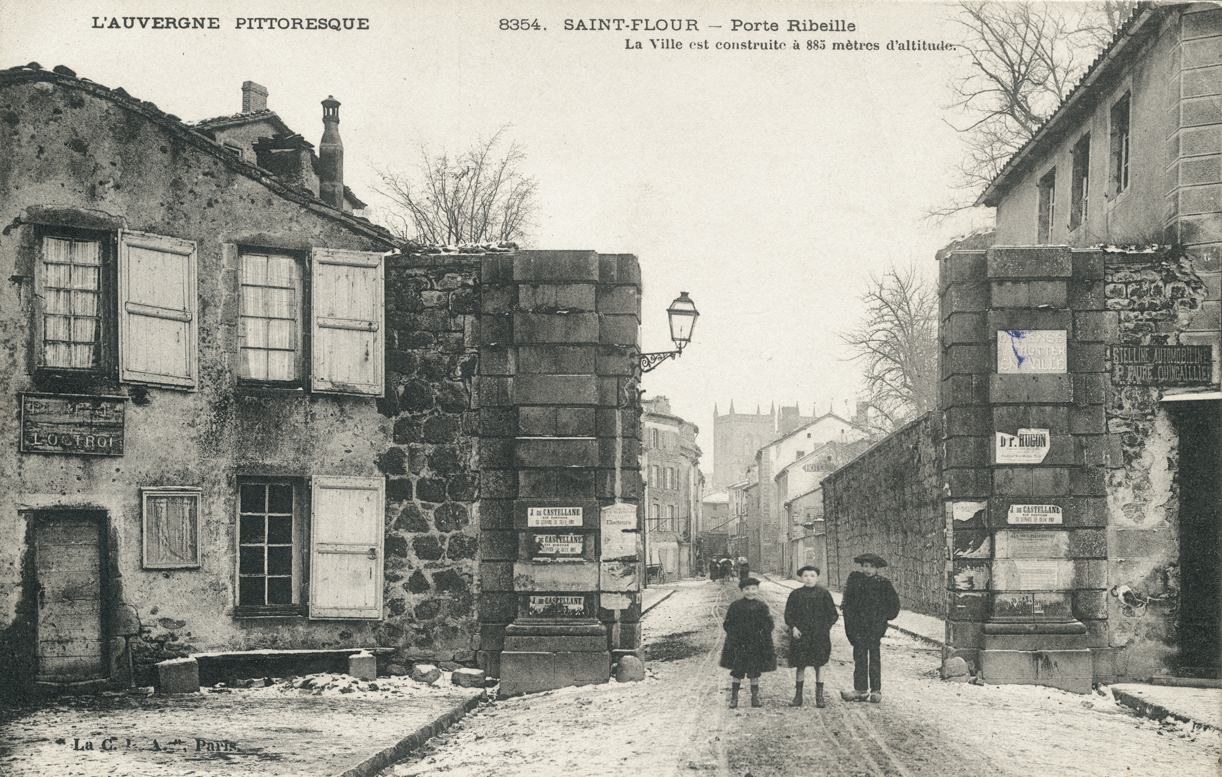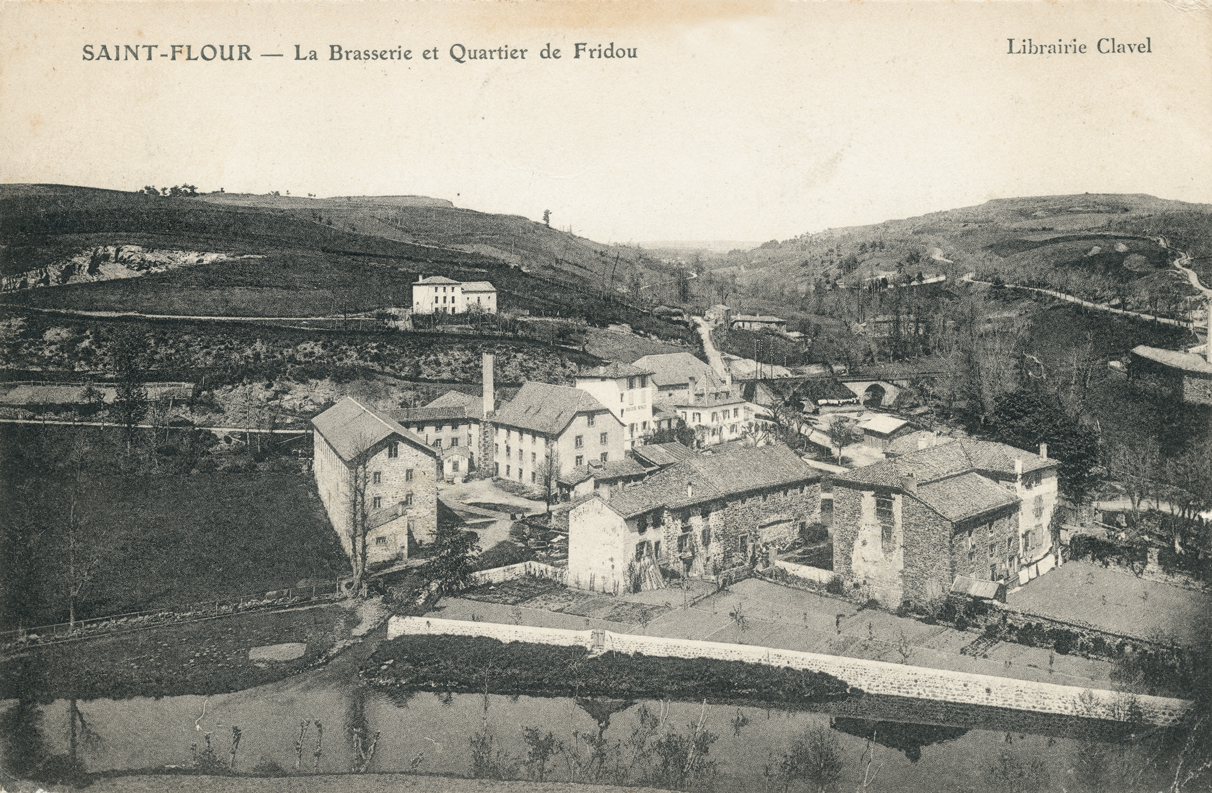IV.
Suburbs in the Old Regime
From the XVIth century’s end to the french Revolution
The France to Languedoc’s path of course generates income for the trade and the hotel industry. Some deals with skins (tanners, shoemakers, bridle makers, saddlers, glove makers …). The sheep’s wool is also transformed on the spot: washed, beaten, combed, carded, woven and, of course, tailored. At last, a visitor of the seventeenth century praises the work of the sanfloran cutlers.
The wars specter moving away, the agglomeration will leave its ramparts. From the 16th, the « Faubourg du Pont » overflows on the other side. In 1643, the mail coach and its courier system settled there. In the upper city, in 1767, one continues the « rue du Collège » and the Ribeyre’s gate is opened. In 1771, the brand new hospital was launched. In 1773, walkways were arranged in place of the fortress’ first wall.
But the greatest evolution of Saint-Flour's plan at this time is undoubtedly the new road that connects the bridge to the city. At this time, the report is without appeal: the rue du Thuile no longer fits to the important traffic of horses teams that develops then. Until 1772, there will be expropriations, destructions, diggings, backfillings and … Explosions! 200 kg of black powder to cross the obstacle of the basaltic plateau.
This road remains today the main axis of circulation between upper and lower cities even if the pedestrian will more willingly walk threw the rue du Thuile or the famous stairs of the Chemin des Chèvres (goatses‘ path).
The XIXth Century
At the beginning of the 19th century, industrialization and the revolutionary storm almost got the better of the crafts that made life in the suburbs. Barely a few looms that continue to work. In the textile field, three factories will open in Saint-Flour during this period, including two in the suburbs. In the early 1840s, the Auriac et Compagnie Company, which will employ more than 300 people at its finest hours, establishes itself near the main road. A few years later, “La Grande Carderie et Filature du Faubourg Malafosse-Rouchy” opens in the district of Fridou. The first will close definitely in 1904, the second in the late 40’s.
70 years after the new road opened, it is the bridge that has become obsolete. Never mind, in 1847 the Pont Neuf is completed. Much wider, flatter, it is a pleasure to cross the Ander ... Was it only the following years gave reason to its detractors, the Ander having proved many times that it could overwhelm this modern work of Art.
The steam also ends up finding its way into Cantal. The train station was completed in 1886, but it will not find its full performance before the “Neussargues-Saint-Flour-Marvejols” section opens (because it will complete the connection between the Compagnie du Midi and the Compagnie d'Orléans ... Paris-Béziers in one trip). The rail revolution could begin! The train will bring quantities of travelers and goods, it will also take many young Auvergnats, gone looking elsewhere for fortune. As everywhere else, around the station, a new residential and commercial district expanded.




